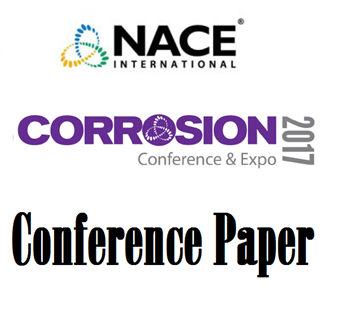Search
Cathodic Protection
View as
Sort by
Display
per page
Review of Cathodic Protection Systems for Concrete Structures in Australia
Product Number:
51317--9024-SG
ISBN:
9024 2017 CP
Publication Date:
2017
$20.00
Revisiting The Anodic Dissolution Of Pure Iron In Strong Acid: Replication Of Bockris’ Estimation Of Butler-Volmer
Product Number:
51322-17681-SG
Publication Date:
2022
$20.00
RP-01-69-1972 "Control of External Corrosion on Underground or Submerged Metallic Piping Systems"
Product Number:
21001-1972
Publication Date:
1972
$179.00
RP0169-2002 (Chinese), Control of External Corrosion on Underground or Submerged Metallic Piping Systems
Product Number:
21108-SG
ISBN:
1-57590-035-1
Publication Date:
2002
$179.00
RP0169-2002-SG (Chinese), Control of External Corrosion on Underground or Submerged Metallic Piping Systems
Product Number:
RP0169-1972
ISBN:
1-57590-035-1
Publication Date:
1972
$179.00
RP0176-2003 (Chinese), Corrosion Control of Steel Fixed Offshore Structures Associated with Petroleum Production
Product Number:
21118-SG
ISBN:
1-57590-170-6
Publication Date:
2003
$179.00
RP-01-80-HD1980-SG, Cathodic Protection of Pulp and Paper Mill Effluent Clarifiers-HD1980
Product Number:
53137-HD1980
Publication Date:
1980
$179.00
RP0186-1986, Application of Cathodic Protection for Well Casings
Product Number:
53059-HD1986
Publication Date:
1986
$179.00
RP0186-HD1994-SG Application of Cathodic Protection for External Surfaces of Steel Well Casings-HD1994
Product Number:
21031-HD1994
Publication Date:
1994
$179.00
RP0189-1989, On-Line Monitoring of Cooling Waters
Product Number:
53070-HD1989
Publication Date:
1989
$179.00
RP0196-2004 (Chinese), Galvanic Anode Cathodic Protection of Internal Submerged Surfaces of Steel Water Storage Tanks
Product Number:
21117-SG
ISBN:
1-57590-189-7
Publication Date:
2004
$179.00
RP0196-HD1996 Galvanic Anode Cathodic Protection of Internal Submerged Surfaces of Steel Water Storage Tanks-HD1996
Product Number:
21077-HD1996
Publication Date:
1996
$179.00












